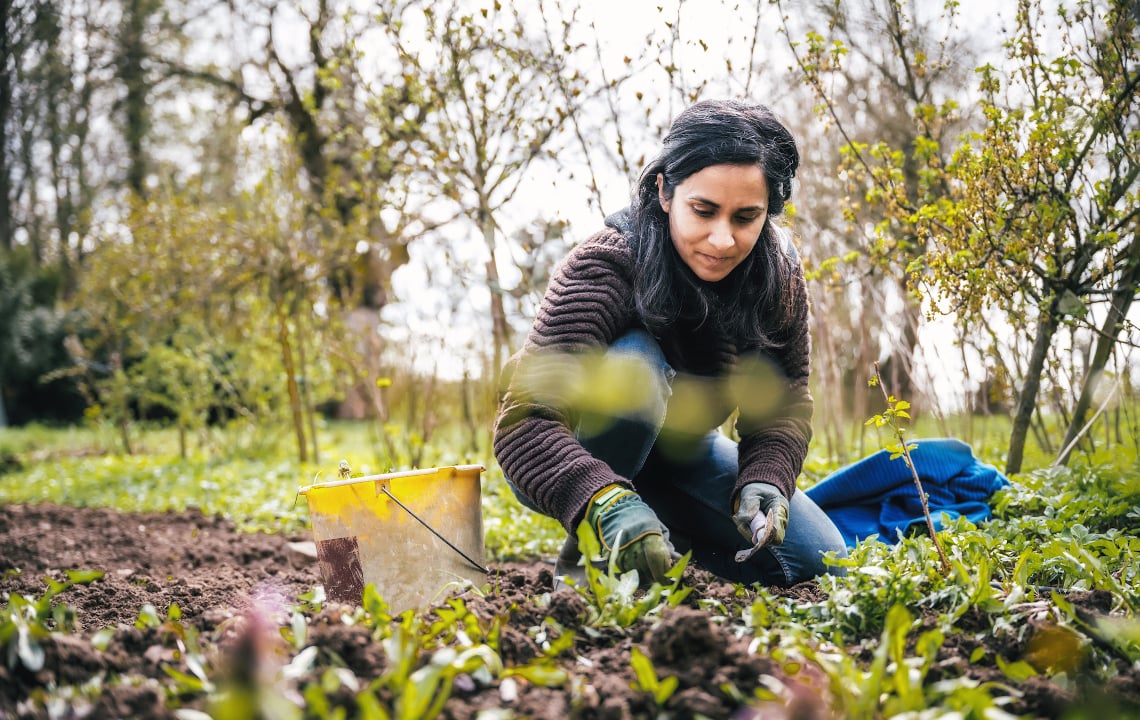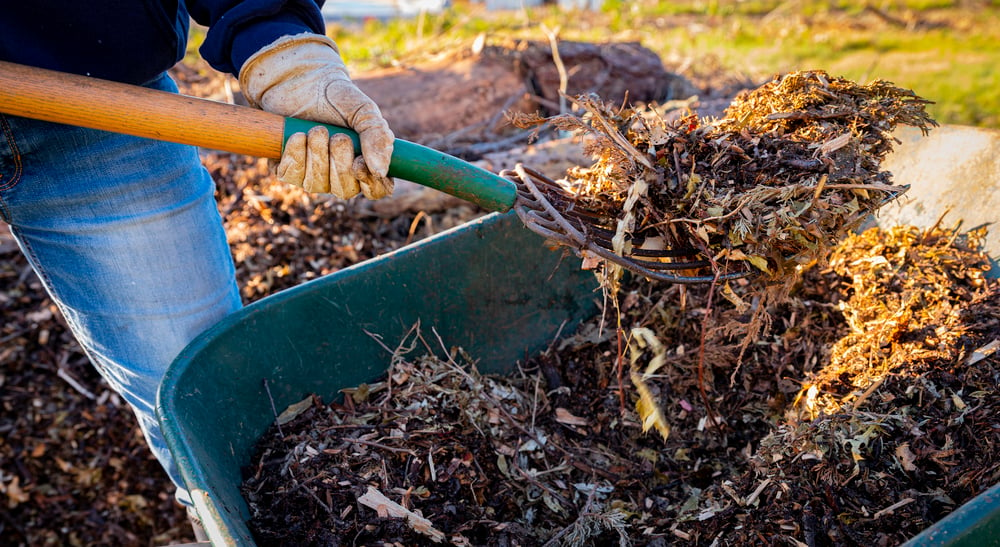It’s still hot, but the days are shortening as summer begins to slip into fall. Farm chores are adding up, especially as they pertain to the family garden. Here, homesteader Mara Watts shares her cool-season garden strategies from her 2.5-acre mini-farm in Western North Carolina.
In late summer, high temperatures begin to cool offering a break from the muggy, and quite buggy, weather conditions. Mother Nature is hinting at the coming fall season as a cool breeze blows through. With this time of year comes a new set of gardening chores.
On our mini-farm, we are planning some new-to-us strategies in hopes of reaping a bountiful cool-season crop.
With broccoli, lettuce, spinach, carrots, and even bush beans on our minds, we have some work to do to ensure our family garden grows well. In order to do this, we are implementing crop rotation and some new weed control practices. Not only that, but we’re also performing a crop experiment we hope works well in our soil.
Here are just a few ways we plan to take advantage of the colder months ahead.
But First --- I Wasn't Always a Gardener
Growing up, I remember watching as my mother slipped on her dirt-stained tennis shoes, and headed out to the garden. She took great pride in what she grew. Watering, weeding, digging, amending, transplanting, cutting, pruning --- doing all the things a knowledgeable gardener knows how to do.
Honestly, I was convinced she could look outside and the azaleas would bloom. Gardening came easy for her.
Unfortunately, this magical skill did not pass down in my DNA. Gardening has been my personal struggle on the farm, despite my years of effort. I’ve read every book, listened to all of the gardening podcasts, signed up for the courses, you name it I’ve tried it.
It finally clicked for me when I received a valuable piece of advice. After complaining about my inevitable “black thumb”, a fellow homestead friend said to me, “Mara, don’t give up. If you don’t plant the seed, you’ll never know what you can and will grow.”
You see, I had almost given up. I was frustrated with my efforts seemingly failing time and time again. But what my dear friend had said was simple - just plant the seed. Keep going. You learn from the ups and the downs. From that piece of advice, I picked back up and kept researching, digging, and sowing seeds. It has worked out well for me.
Moving forward, I ensure I have a plan. A strategy that guides me in the garden. This fall season, we’re adding a few key to-dos to the list. Our fingers are crossed and our hopes are high for a prosperous fall growing season.
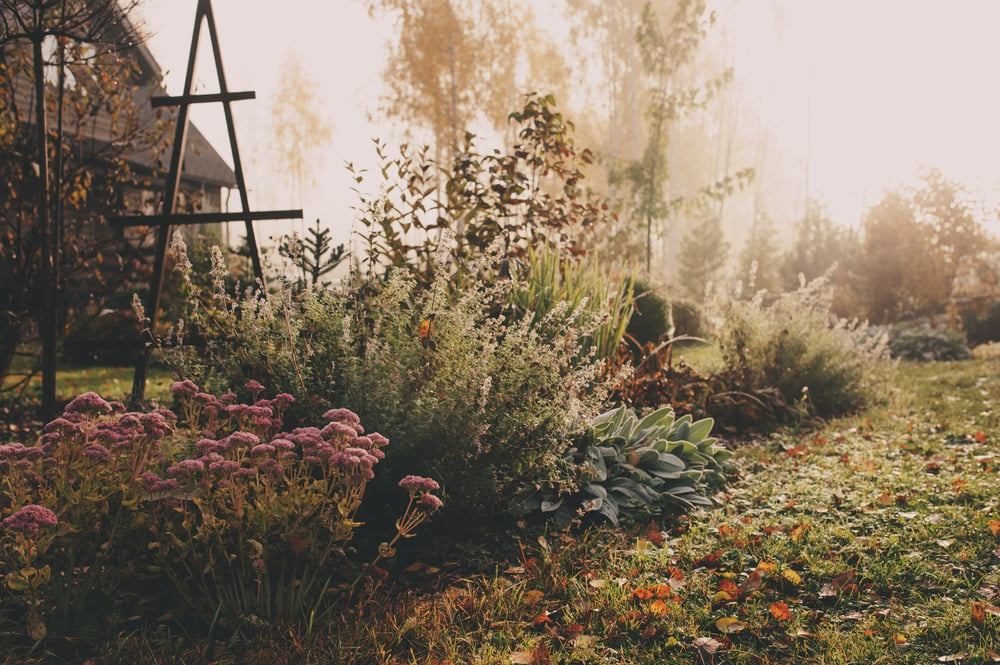
It's All About Garden Strategy
In the past, I’ve relied on wishful thinking. Plant the seed and hope it grows. Occasionally, I would see success. But more times than not, my lack of planning left us with a low return on effort.
This year, we’re taking it month by month, starting with some crop rotation and weed control.
Weed Control and Crop Rotation
Our summer garden grew well, as did the weeds. If one of us weren’t weeding every day, within 24-48 hours the weeds would be towering over the vegetables and flowers.
At the beginning of the growing season, I was adamant about pulling them by hand. There’s just something therapeutic about getting my hands dirty in the garden. But with three young children at home, I found myself becoming distracted by life. Despite producing well, the garden suffered greatly in the weeding department.
Needless to say, our fall garden will be experiencing an upgrade with some weed control: Landscape Cloth.
Summer brought squash, zucchini, tomatoes, and cucumbers. Our squash is just about to retire, as are our cucumbers. And so, as fall approaches, we will begin working with a crop rotation strategy to utilize the nutrients left behind by previous plants.
Our strategy is as follows:
- Direct sow green beans. As crazy as it might sound, we’re giving bush beans a try this fall.
- Rotate crops. For example, we’ll begin by pulling non-producing squash and zucchini plants and replacing them with spinach.
- Mulch and winterize any unused ground.
- Sow more broccoli for our in-ground garden plot. As for the raised bed, we will replace the cucumbers and broccoli with various lettuces.
Below is a more detailed explanation of our month-to-month garden plan.
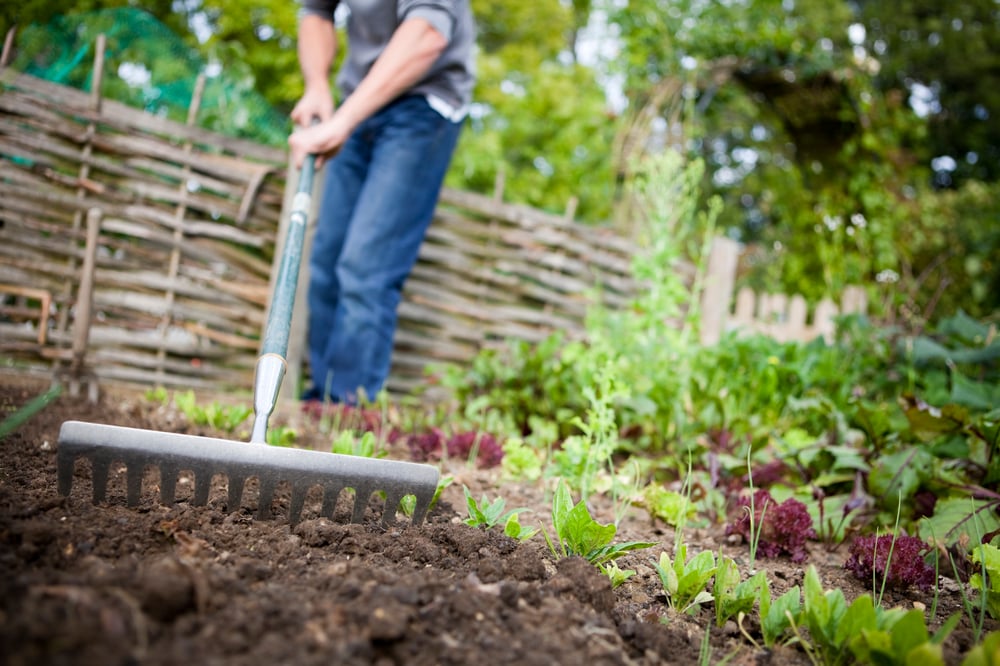
August
Typically, August is the hottest month for us here in Western North Carolina. Thanks to the increase in temperatures, weeds tend to lessen, but they are still prominent if not taken care of in the garden.
Another plus of this month is that our vegetables are either producing at higher rates or they are slowing down, giving us time to begin the process of pulling non-producing crops and preparing the ground for new seedlings.
The focus is on sowing cold season foods that our family enjoys. These crops tend to mature faster, meaning we will reap a harvest within a month's time. They appreciate the cooler temperatures as the soil begins to cool from mid-September into October.
Here’s our prioritized list of to-dos for August:
- Direct sow Greasy and Half Runner Beans.
- Begin sowing our fall garden seeds. In early August, from August 1st to the 10th, we will sow lettuces, broccoli, and spinach.
- Remove non-producing annual vegetable plants. Rotate with new seedlings, or cover with mulch and animal manure to begin the process of winterizing the soil.
- Cover the in-ground garden with landscape cloth for weed control. Prep it and allow the soil to rest until transplant day.
- Weed around marigolds and nasturtium flowers, and lay landscape cloth around them. These flowers are great for pollinators and help control pests in the garden.
- Begin gathering Winter Sowing supplies (more on that below), mainly milk jugs and translucent containers. I like to ask friends and family to hold onto their containers for this purpose.
- Take seed inventory.
September
On average, lettuce seedlings take anywhere from 7 to 20 days to germinate, and up to 85 days to reach full maturity. From this, we are projecting that from late August to the beginning of September, we’ll have lettuce seedlings ready to go in the ground.
The same goes for spinach. After sowing the seeds, we will have about 6 to 21 days to germination, with a 46-day harvest timeline. By late August or early September, we’ll have spinach seedlings ready to be transplanted.
As for broccoli, our seed packets project a 10-day timeframe for germination, with 58 days to maturity. Since we will be sowing these in early August, we should have broccoli starts ready for transplant by the end of the month into early September.
Our September to-do list includes:
- Weeding the in-ground garden and raised beds.
- Transplanting lettuces, spinach, and broccoli seedlings.
- Add rabbit manure to enrich the soil. Rabbit manure is considered “garden gold” and has been an excellent natural amendment in our garden.
- Mulch areas we will not utilize for the remainder of the planting season.
- Water well.
October and November
October into early November is a time for harvesting the last of our crops and preparing for next year. Planning is a never-ending job when the garden is a primary food source. As our family grows, our garden grows. It simply comes with the territory.
During this time, we hope to be harvesting our leafy lettuces and spinaches, possibly our broccoli, carrots, and beans. It is also a time for winter and spring preparation. Our priority is preparing ourselves for winter sowing and ordering seeds.
October and November garden priorities:
- Gather winter sowing tools and supplies. We will begin this process as soon as November 1st.
- Order heirloom seeds to replenish what we used this year. In our observation, we found that squashes, broccoli, tomatoes, lettuces, and spinach do rather well in our soil. Cucumbers are finicky, as are melons. We want to ensure we have plenty of what grows.
- Garden clean-up. As soon as the garden comes to an end, it will be time to clean up a bit. We will add mulch and more animal manure.
- Animal rotation is also an important strategy we have come to love. Last year, our pigs lived on our garden plot, fertilizing it, rooting up weeds, and killing off grass. This year, we plan to set our chickens into the garden to poop and scratch around. We will continue to dump rabbit manure over the winter season.
Beans - Our Fall Garden Experiment of Choice
Since talking to local gardeners, we have found that planting bush beans in the fall is both doable and worth trying.
Beans, such as greasy beans and half runners, can be direct sown a few days after the first day of summer. This helps ward off bean beetles that enjoy munching on the beans if planted earlier in the season.
With that, we’re planning a garden experiment. We have reserved a large section of our in-ground garden for bush beans. With a 56-day to maturity timeline, we are hopeful that from late September to mid-October, we will have beans growing in the field. This keeps us well in line with our area’s projected frost date of October 13th.
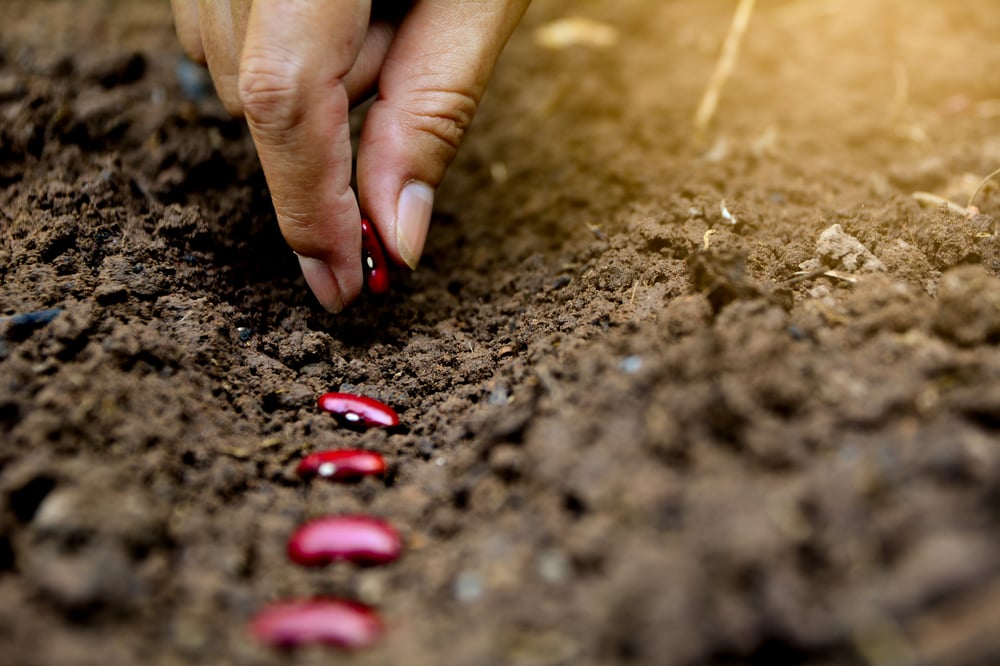
Why we chose to try beans in the garden this Fall
Beans are a favorite in our home. Four out of five members devour green beans at mealtime, especially if they are homegrown. For our family, it makes sense to grow and preserve only what we will eat.
With the state our food supply is currently in, we have decided it was essential to work towards self-sufficiency. We have dedicated ourselves to growing and preserving as much as possible. Canning and freezing at least one food item each week is our goal.
If you are curious about how you too can preserve fresh green beans, among other produce, check out this great article.
Winter Sowing Preparation
Over the 2021 winter season, we tried a new-to-us experiment for our garden. I had stumbled upon an intriguing method that a woman named Trudi Davidoff has become famous for --- winter sowing.
In a nutshell, winter sowing is the process of sowing seeds in plastic milk jugs, placed outdoors throughout winter. The idea is to take advantage of the natural elements.
It sounded impossible and crazy to me, but I gave it a try. I was pleasantly surprised that by the time spring rolled around, I had about 40 milk jugs filled with hardy seedlings - squash, zucchini, broccoli, anise hyssop, tomatoes, radishes and much more.
Over the coming months, I plan to once again stock up on translucent milk jugs. After experimenting with various types of plastic containers, I did find that milk jugs and clear orange juice containers germinated and grew seedlings very well.
Soda bottles and formula containers were not as successful. I attribute this to the plastic being thicker and not translucent.
Here is How to Winter Sow:
- Gather all of your tools and seed sowing items. You will need the following:
- Clean milk jugs or similar translucent containers
- Seeds and potting soil
- Spray bottle
- Coffee filters
- A drill or sharp knife
- Duct tape, permanent marker, and plant tags
- Winter Sowing Instructions
- Clean your containers using warm soapy water. Rinse well.
- Cut your containers in half.
- Drill 4 holes into the bottom of each container for proper water drainage. Add a single coffee filter to the bottom inside of the jug, covering the drilled holes. The coffee filter allows water to drain while keeping the soil in your container.
- Add potting soil to the container, leaving about an inch headspace.
- Add seeds to the top layer of the soil. For tiny seeds, I like to sow about 10-15 per container. For larger seeds, I’ll sow 4 or 5 in a single container.
- Add a top layer of soil over the seeds, gently patting it down with your fingers. Label a plant tag and push it down into the soil.
- Spray the soil with water to dampen it.
- Reapply the top portion of the milk jug and duct tape around the cut seam. Leave the screw top off as this allows your container proper ventilation. Also, you want rain and snow to access your seedlings.
- Label the outside of your container with a permanent marker.
- Set the containers outside in an open-air location.
- Leave the containers outside, monitoring the soil regularly to ensure it does not dry out. Add water when needed. As spring approaches, you can open the containers for sun and air access.
- You will know your seedlings are ready to transplant in the springtime when they have at least three (3) leaves.
Winter sowing was an amazing success, as these seedlings were already conditioned to the outdoors. They weren’t “babied” in any sense, and withstood an entire winter season.
I remember looking out the window as it snowed, burying my milk jugs thinking, “Should I dust them off? What if the snow kills them?”. But the piece of advice here is to not worry. Let the containers be, let Mother Nature do the work, and it all pays off.
Every winter sowed seedling planted in our garden has outperformed all direct sown and indoor transplanted seedlings. I highly recommend this method for any and all gardeners.

A Farmer's Work Is Never Done
Each season is a learning opportunity.
During the fall growing season, I’ll be taking notes on how well our garden produces, if our rotation strategy pans out, what grows, and what doesn’t. This information will be used to plan for the following year, giving us valuable insight into what steps we should take next.
Over winter, we will take time to rest of course, but garden maps will be drawn, winter sowing will take place, supplies will be organized, and so much more.
They weren’t lying when they said, “A farmer’s work is never done.” It is a lot of work, but oh how rewarding this life has been.


